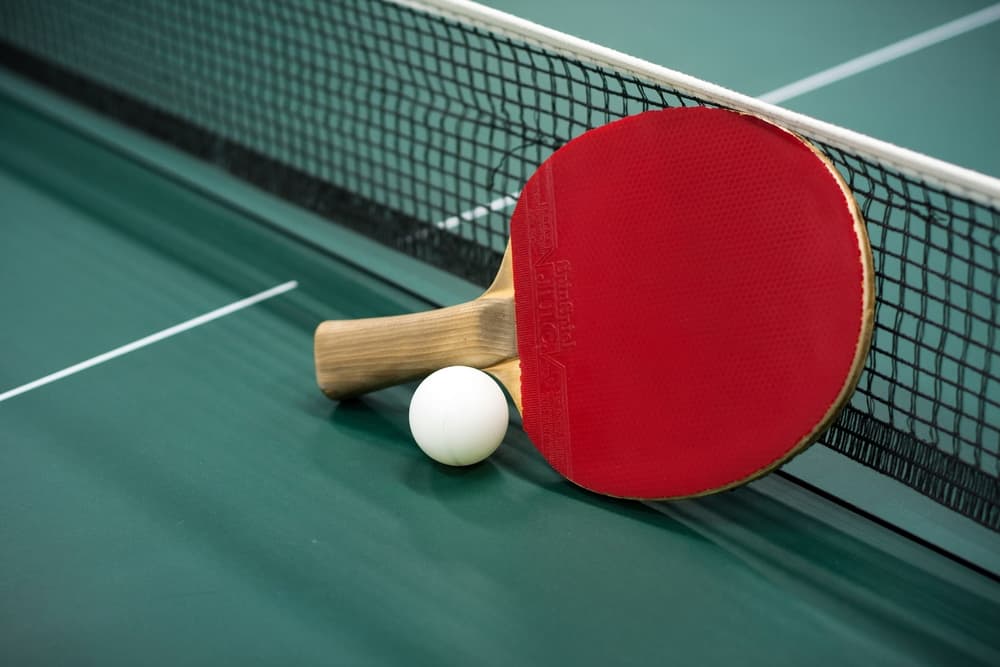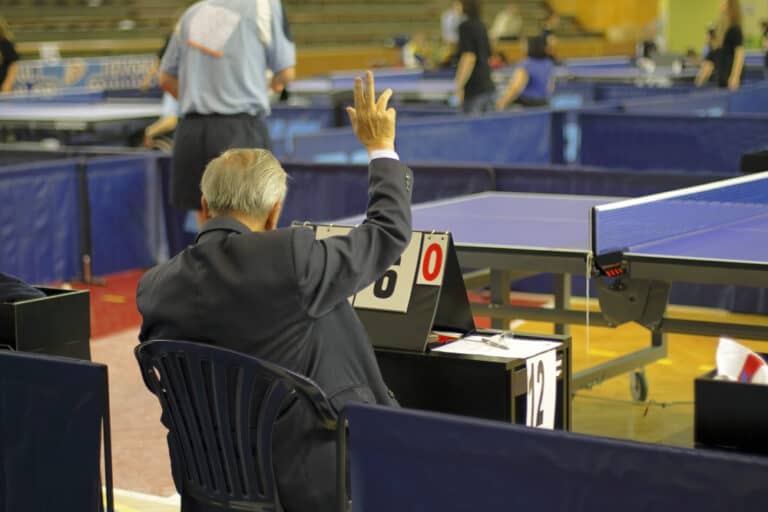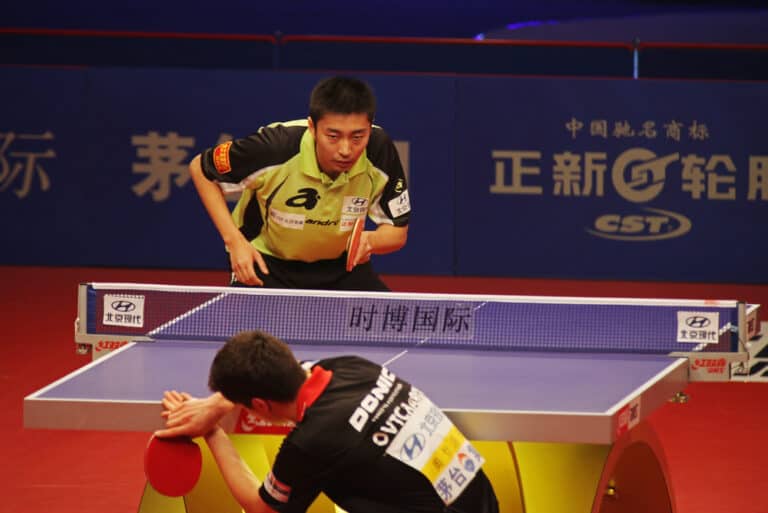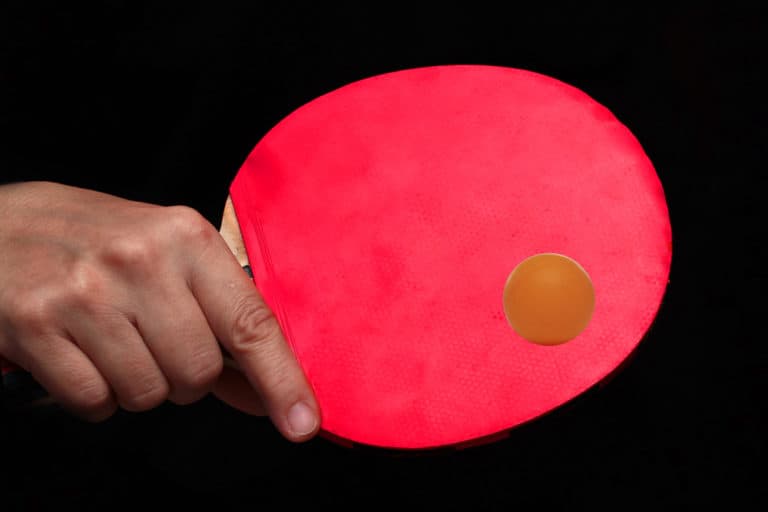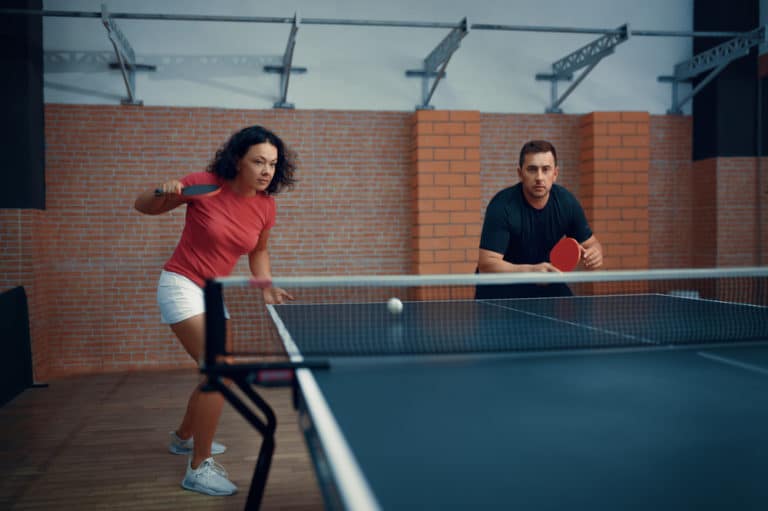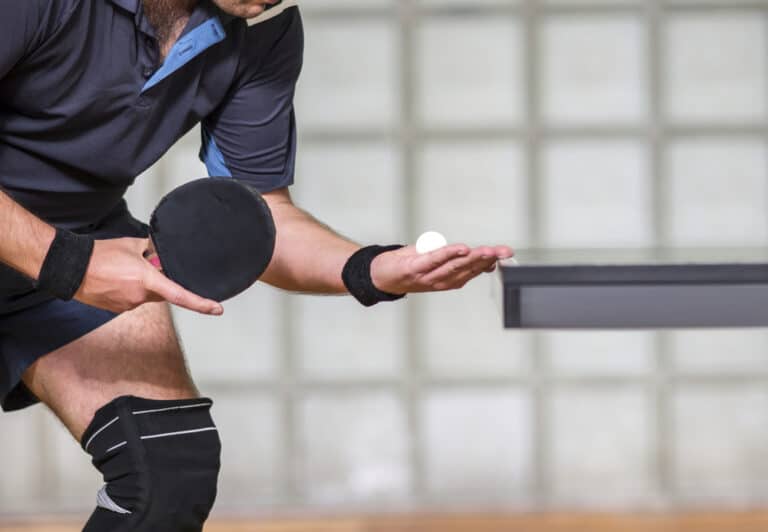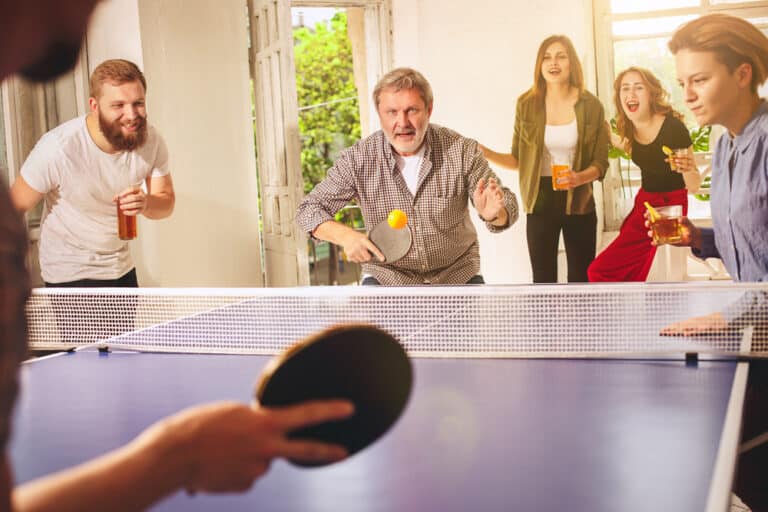When Should You Change Ping Pong Rubber?
The quality of ping pong rubber deteriorates with use and exposure and does need to be replaced occasionally. How frequently this needs to be done can be confusing for players since the deterioration is gradual, and it’s not the same as when a string on a tennis racquet suddenly snaps dramatically. The rubbers on a table tennis paddle slowly lose tackiness and performance, so it can be tricky to know when to replace them.
Ping pong rubber must be changed when it loses tackiness, or smooth spots appear on the paddle. Rubbers must be changed when they become worn in the center. Pimpled rubber must be replaced if it loses any pips. Rubber must be changed if it’s dirty, dry, or no longer delivering consistent shots.
Some professional players change their rubber daily, but social table tennis players don’t need to change the rubber on their bats very often. Changing the rubber on your bat can give your game a lift so let’s go through how often it needs to be done and how to keep it in tip-top condition for as long as possible.
When Must You Change Ping Pong Rubber?
The surface of the rubber changes and deteriorates over time. The decline in quality and elasticity greatly affects the speed, accuracy, and spin that can be placed on the ball when playing shots.
It is estimated that for average players, ping pong rubbers should be replaced after approximately 60 hours of play. Depending on the frequency of play, those hours will be clocked up differently for each player.
Some indicators that your ping pong rubbers have reached the end of their life may be subtle. The paddle may simply not feel as springy or grippy as it once was. However, there are also some definitive tell-tale signs that your racquet needs new rubber surfaces.
9 Signs Its Time To Change Your Ping Pong Rubber
Ping pong rubbers are surprisingly durable for such thin layers of material. Most social players only need to consider replacing rubbers every year or two.
Putting new rubbers on your paddle can feel a lot like changing the tires on your car. Even if your rubbers aren’t in terrible condition, your paddle will feel refreshed and springy with a fresh new surface, which may boost your game.
There are ten signs that it is time to change your ping pong rubber:
- There are slippery spots on the surface of the paddle – Use a ping pong ball and rub it softly across the surface of your paddle. It should feel tacky. If you hit any smooth spots, you probably need new rubber. The slippery area may also appear shinier than the rest of the surface if you hold it to the light.
- Loss of spongey texture – Using your forefinger, gently press down on the rubber in spots across the surface of the paddle. If it feels more spongey around the edges than in the middle, it’s time to replace the rubber.
- Faded color – As ping pong rubbers age, they lose their elasticity and tacky texture, and the color fades. If you notice that the surface of your paddle has uneven color, the rubber is probably old and due for a change.
- Cracks in the rubber – Visible cracks are a clear indicator that the surface of your paddle is not up to scratch and needs to be changed.
- Your shots become inconsistent – An uneven rubber surface will deliver shots that may not always land as directed.
- Less grip while playing – A sticky paddle allows the player to add more spin to shots. It is sometimes possible to restore tackiness to the surface of a paddle, but when you’ve exhausted all methods, and the rubber is still not sticky, it’s time to replace it.
- Pips are worn down or missing – Some table tennis rubbers are covered in tiny rubber pips, or pimples, that face outwards. These protrusions can be short or long, depending on the player’s preference. They must be equal length across the surface of the paddle to ensure that shots will land where they are aimed. If any have worn down or fallen off, it is a sure sign that the paddle needs new rubbers.
- The rubber is dirty – It is essential to keep your table tennis paddle stored correctly to ensure that the rubbers stay clean, feel tacky, and last as long as possible. If your paddle has landed in a spot where it picked up a lot of dirt and debris, you may want to give it a fresh lease on life and replace the rubbers.
- The rubber is dry and cracked – This is common on paddles that are not stored correctly. We have all seen ping pong paddles at holiday resorts and social centers that are left out for visitors to use. The rubbers on paddles exposed to dry air and a lot of sunlight often start lifting on the sides or develop hairline cracks around the edges.
- The rubber has worn down – Wear and tear can result from repeated playing and cleaning. Resurface your ping pong paddles when the rubber is damaged or worn.
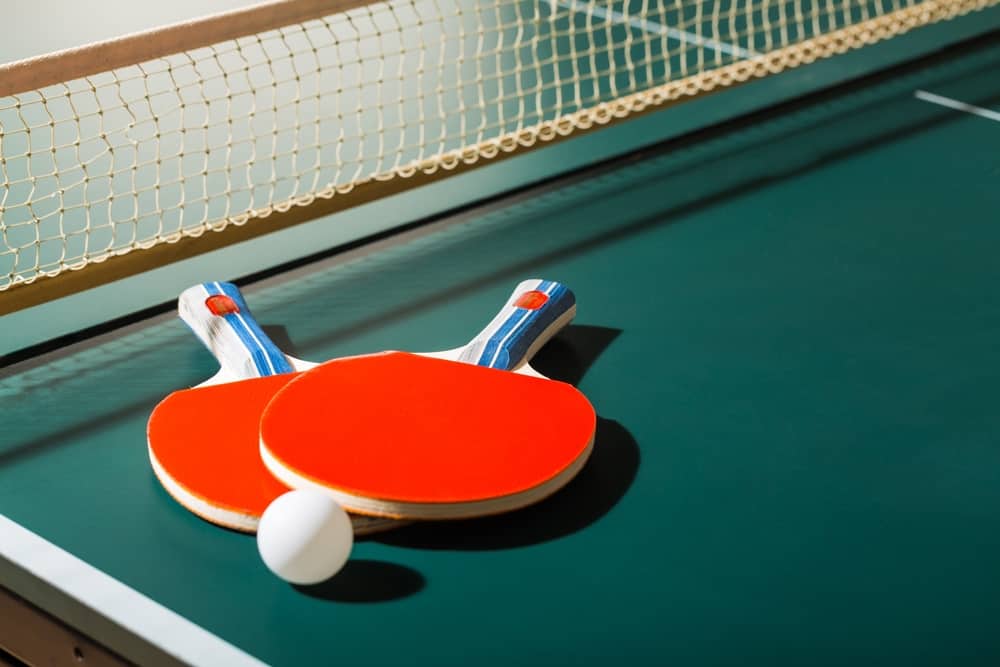
How Long Do Ping Pong Rubbers Last?
It is estimated that ping pong rubbers need to be changed after every 60 hours of play to stay in peak condition. The number may, however, be far more or less depending on several factors.
The frequency that ping pong rubbers need to be changed is affected by the following:
- The quality of the rubber – Like most things, you can expect to pay more for more durable ping pong rubbers that will deliver good performance.
- The style of the rubber – There are four types of ping pong rubber: inverted, long pips, short pips, and antispin. Inverted rubber is the least durable surface and often develops a depressed area in the middle where the ball makes contact.
- The player’s ability – Great ping pong legends like the legendary Ma Long will undoubtedly wear out ping pong rubber much faster than an average player. Competitive players are also more likely to quickly notice any changes in the quality of the paddle rubber and need to change them more frequently.
- Maintenance of the rubber – Ping pong rubber can last significantly longer if it is well taken care of. Regularly clean the rubber with water and allow it to dry before storing the paddle.
- Storage of the paddle – Many ping pong paddles come with rubber protection sheets to help the rubber last longer. If you don’t have a special storage bag, you can easily create them using overhead transparency sheets or even a zip-lock bag.
The main thing is to protect the rubber. It is also a good idea to avoid extreme changes in temperature, so avoid leaving your paddle inside a hot car or where it will get very cold.
How To Make Ping Pong Paddles Sticky Again
Even if you carefully maintain your ping pong rubbers, they will eventually lose their stickiness. The extra layer of grip over the surface of your paddle helps a lot when blocking spin shots from opponents!
Replacing ping pong rubber can be expensive, but there are many ways to refresh its sticky coating when they start to lose grip. Most of these methods are only temporary fixes but work well to buy you a bit more playing time before you need to change the rubbers.
- Specialized table tennis racket cleaners – Ping pong rubber cleaners like Butterfly Table Tennis Racket Care Kit (Available on Amazon below) are pricey, but one bottle lasts a long time. This product is safe, effective, easy to apply, and will keep ping pong rubbers in an ideal tacky condition for a long time.
- Use ordinary rubber cleaner – You can use any rubber cleaner designed for vehicles to recondition the rubber on your ping pong paddles. Follow the product instructions carefully to avoid damaging your rubbers.
- Use sunflower oil – This is an inexpensive, temporary method to give your ping pong rubbers some extra stickiness. Brush on a thin layer of sunflower oil, wipe off the excess, and then let it dry on its own. If it’s still not sticky enough, you can repeat the process, but be sure to let it dry naturally.
- Olive oil – You can apply olive oil the same way as sunflower oil to restore the surface of your table tennis paddle.
- Use boosters – Some players apply a thin layer of glue to the rubber surface of their paddle before each game. Products like Falco Tempo Booster (Available on Amazon below) will keep the rubber surface of the paddle perfectly grippy for longer. However, while using boosters is acceptable for practice purposes, it is not approved by ITTF as rubbers need to be free of physical and chemical treatments.
How Do You Clean A Ping Pong Paddle?
Keeping your ping pong paddle free of dust, hair, and debris can be tricky since the rubber surface must be slightly sticky so you can play winning return shots. That means picking up dirt is inevitable when the paddle is out of its protective sheets and case.
The best cleaners for regularly cleaning a ping pong paddle are clean room temperature water and a soft cloth or sponge. It is better to use distilled or bottled water since some tap water may contain a lot of minerals, but you can use it if that is all you have available.
Dip the sponge or cloth in the water and wipe the rubber using upward strokes away from the handle. You don’t have to press hard; just ensure that every part of the rubber has been cleaned on both sides of the paddle. It should feel like you are lightly brushing any debris up and off the top of the paddle.
Never soak the ping pong paddle in water or immerse it, as the wooden parts will get damaged. Only use a damp sponge or cloth to wipe across the rubber sections. Rubber is water resistant, so you won’t have to worry about the wood below.
The paddle handle can be cleaned with a dry microfiber cloth. You don’t need any special cleaning products, and a cloth is usually enough to clean off any sweat or oil on the handle.
Once you have cleaned the ping pong paddle, it should air dry (not in the sun) before replacing the rubber protection sheets. It should then be stored in an area out of direct sunlight.
Why Is Ping Pong Rubber So Expensive?
Table tennis paddle rubbers are specialized equipment. You can’t simply roll out any layer of thin rubber, cut it to size, glue it onto your paddle and expect it to deliver the same performance as specialized rubbers.
It can be quite a shock for table tennis players who want to use top-brand rubbers to realize that quality doesn’t come cheap, even for such small items. The cost of the products has a lot to do with their design, manufacturing process, origin, demand, and of course, the brand.
Ping pong rubbers are available in many price ranges starting from around $10 per sheet. There are some excellent value-for-money options even within the lower price range, like the Loki RXton (Available on Amazon below), which has received consistently excellent reviews and is around $13 per sheet.
On the opposite side of the price scale is the Butterfly Digics 09C which is close to $100. This is a professional high-spin rubber that you will definitely want to take very good care of!
Investing in high-quality ping pong rubbers may not make a huge difference to the game of recreational table tennis players, but it can make a world of difference as you move up the leagues. Taking care of ping pong rubber ensures that it lasts as long as possible.
Conclusion
Most rubber lasts for at least 60 hours of play. Ping pong paddle rubber should be changed as soon as it is visibly damaged, loses its grippy surface texture, or no longer delivers consistent shots. Taking care of the surface of the paddle by keeping it clean and always using protective sheets will ensure that your ping pong rubber lasts as long as possible.

